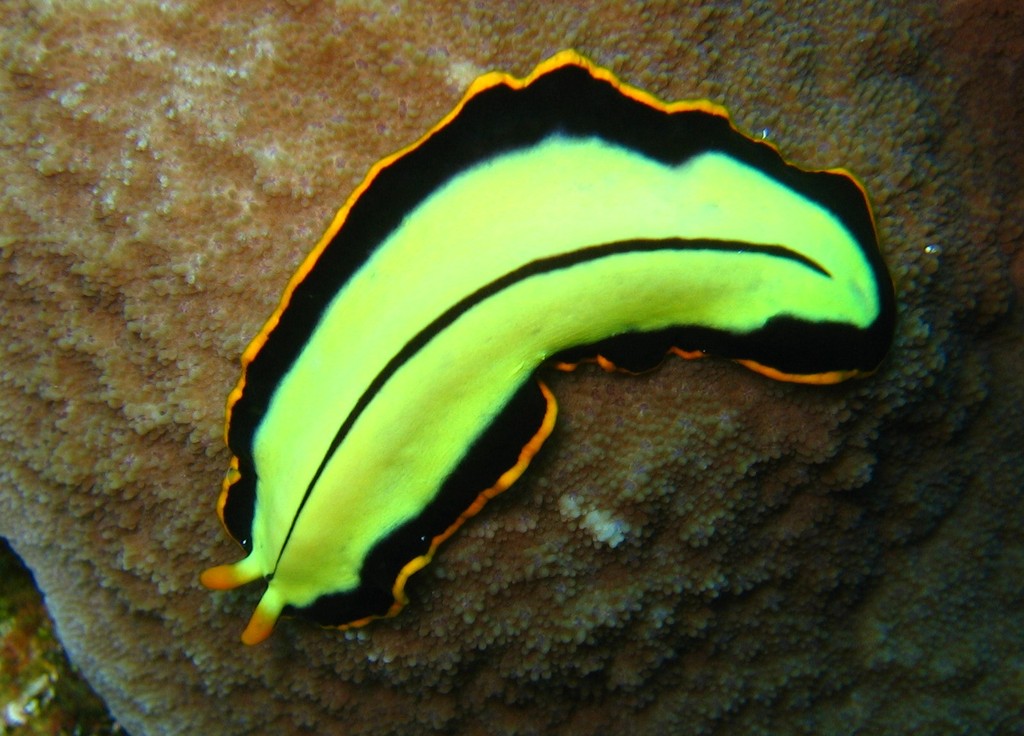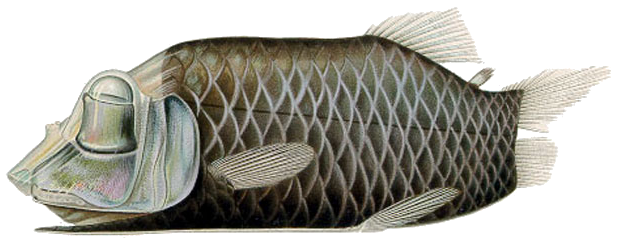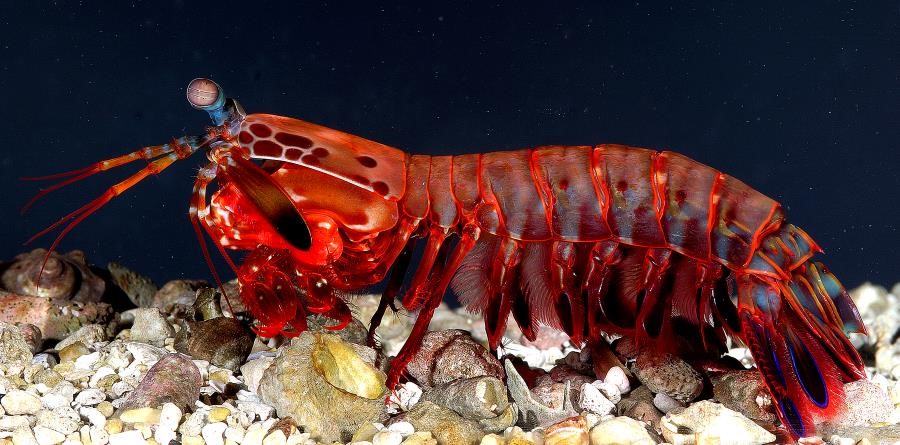Surely if something is blue then we all see that it’s blue - fact! But what if it’s not that straightforward? Colours can have different meanings in different cultures and religions. And our biology is not completely the same. Let’s dig deeper…
Do we see | colour the same?
How we see colour
There are three types of colour receptors in our eyes: red, green and blue. But how do we see the amazing kaleidoscope of other colours that make up our world? Colm Kelleher explains how humans can see everything from auburn to aquamarine.
What did colour mean to the Victorians?
Did the Victorians see colour differently to us? In short - no. Their biology was the same as ours. But what did differ were the words used to talk about colour. In fact, this idea of how we see and discuss colour was the source of a hot debate started by a key British politician writing at the time…

Image credit: Dan Brady via Wikicommons CC BY 2.0
William Gladstone (1809-1898) - who served as UK Prime Minister - was fascinated by the Greek epics, the Iliad and Odyssey by Homer. And what he noticed in his research was a lack of words used to describe different colours. In particular, he couldn’t find any mention of green. He also noticed that Homer described the sea as 'the colour of dark wine'. Due to this, he came to the conclusion that ancient populations must’ve had an inability to see colour like more modern populations. According to Gladstone, only after years and years of evolution had humans developed a so-called ‘colour sense’.
Now, as you can imagine, this hefty claim created quite a stir and, of course, nothing is straightforward … so let’s get a bit more background…
A colour explosion!
Gladstone was writing in the midst of the Victorian era (which spanned the reign of Queen Victoria from 1837-1901). Often when we think of this time in history, it can be easy to think of it as a bleak and dark world of slums, pollution and intensive industry. This isn’t helped by the fact that all of our images from this time are black and white due to the technology back then. But far from these misbeliefs, the mid-late 1800s saw a real boom in inventions related to colour.
This was partly started by one young chemist, William Perkin who - at the age of 18 - was working in a London lab to find a cure for the disease, malaria. However, whilst doing his research he spilt an aniline-based chemical on his shirt. It was then that he realised that aniline could be partly transformed into a crude mixture which - when extracted with alcohol - produced a substance with a strong purple colour.
Gladstone may have been influenced by the seven colours of the rainbow ... something that was loosely based on the seven notes of the musical scale.
At the time, colour dyes were made from natural plant and animal-based ingredients, which were difficult to produce quickly and cost-effectively. For example, the substance Carmine - used to create the colour red - is traditionally made from thousands of insects. And, previously, the process for making purple - a dye known as Tyrian purple - involved extracting a substance from a certain type of sea snail. This was expensive and meant that it was only affordable to the most wealthy and powerful (royalty and those high up in the church).
Perkin could see a big business opportunity in all of this and in 1859, he filed for a patent to secure the discovery of his newly-found dye (mauveine). He couldn’t have picked a better time as the textiles industry was thriving and there was heaps of coal tar around (the key ingredient in his dye). It was the Industrial Revolution after all and coal tar is a by-product of the process for making coal, gas and coke.
So what’s this got to do with Gladstone and the Greeks?
Well, Perkin’s invention led to the development of many more synthetic dyes (colours made with non-natural ingredients). This also led to a growth in the number of colour names and words. This means that Gladstone could write about a bigger range of colours since the science related to colour had developed to such an extent that there were many more colour-naming words in use. In theory, the colours had always been there even in the time of the Ancient Greeks. We could always see them, we just didn’t have a name for them previously.
Additionally, Gladstone may have been influenced by the seven colours of the rainbow as suggested by scientist, Isaac Newton (1642-1727) - something that was loosely based on the seven notes of the musical scale. We now know that there’s likely to be many more colours than seven and Newton’s number was almost quite random in relation to the science it described.

What Gladstone's theory highlights more than anything, is the risk of analysing an ancient text in a modern way. In other words, the danger of making claims based on the knowledge we have now and not accounting for what was unknown at the time the text was written. When it comes to colour, it’s important to think about its close links to culture too. For example, the Eskimo community has over twenty names for white since their white geography around them (i.e. the snow and ice) is so vital to their everyday lives.
Plus, details can be missed…it was found some years later that the colour, green was indeed referred to by Homer in his epic poems. The word ‘chloros’ was used. You might recognise this word from the term ‘chlorophyll - the green pigments found in plants. But Gladstone had mistakenly interpreted ‘chloros’ to mean luminous (bright).
That’s not all…
The health risks of the new aniline-based dyes (in particular the increased use of coal tar) and the social changes that occurred as a result, created some concern among several groups in society.
This is captured in the well-known quote by Irish poet and playwright, Oscar Wilde (1854-1900):
‘Never trust a woman who wears mauve’ - taken from ‘The Picture of Dorian Gray’.
This statement can be understood in a number of ways. It could refer to a sense of snobbery. This is because the character (Lord Henry) who spoke this line was famously vain. He may have hated the new colours and dyes since now everyone could afford certain fashions that were previously a treasure of the rich. Plus, this statement could be an indication of the wider concern amongst society about the unknown long-term effects of the dyes - how will they age? Can we trust these new chemicals?
Notably, English artist, William Morris disliked the development of aniline-based dyes since he feared the damage it was doing to the environment through the pollution it added to the country’s rivers. He also thought it marked the end of the art of dyeing using natural recipes – an ancient art which could be traced back to some of the earliest civilisations and something he fought hard to preserve through his own dyeworks at Merton Abbey.
This article was informed by and based on a discussion with Dr Charlotte Ribeyrol (English Faculty, University of Oxford)
5 cool things about the physics of colour
-
White light is not actually white
-
To understand the nature of colours, first, we need to understand that visible light, along with ultraviolet light or radio signals among others, are types of electromagnetic waves. Just like any wave, light waves have an oscillation - moving up and down at certain rates. This is known as the frequency of the wave. Visible light isn't made up of a single frequency but is instead composed of a spectrum of waves from low-frequency red waves to high-frequency violet ones. A combination of all the waves each with a different frequency results in white light. How then can we observe this effect with the naked eye? Well, simply by exaggerating the effect of the different velocities. This can be done by passing light through different materials. Once the light enters a prism, for example, it bends through the prism differently according to the wavelength of the wave. This is known as refraction. Red light has a longer wavelength and changes direction the least, while violet light has a shorter wavelength and changes direction the most. Once the light exits the prism, the change of paths creates a visible spectrum of the different colours in the order of their velocities: red, orange, yellow, green, blue, indigo and violet. Another way to see this kind of display, in nature, is when you see a rainbow.
-
-
Rainbows are different for everyone
-
Rainbows use the same principle as a prism to separate colours by using the water of rain droplets. Light gets refracted as it enters the water droplet, then reflected (just like a mirror) and finally refracted again when it exits the droplet. Both the refraction and the reflection create the path difference necessary to separate the different colours. In order to see a rainbow we don’t only need sunshine and rain at the same time, but also a certain angle between the incoming sunlight and us, the observer. This needs to be between 40-42 degrees - if the angle was more or less than this, we wouldn’t be able to see it. The fact that this window is so narrow is the reason why rainbows are not as common as we might like them to be! When you’re looking at a rainbow, the light arriving at your eyes is the sunlight refracting and reflecting on specific droplets of water, which will be different to the ones refracting and reflecting the light to your friend’s eyes standing next to you. And so rainbows are not just considered striking to look at - what we see is also unique to us as individuals.
-
-
Not all colours are technically colours
-
We see objects of different colours depending on which colours are absorbed and which ones are reflected. A blue shirt, for example, reflects blue light while absorbing all the other ones. A red shirt, on the other hand, reflects only red light, while absorbing the others. However, we also observe objects with colours different to those in the colour spectrum. This happens when two or more coloured lights are reflected. For example, when both blue and red lights are reflected the shirt will look magenta (a purplish-pink colour). What happens if all colours are absorbed? Well, nothing is reflected and so the shirt looks black. This is why black is technically not a colour but rather an absence of it. On the other extreme, if all colours are reflected, then none are absorbed and the shirt looks white. Just as black was the absence of all colours, white is the combination of them all. This is also the reason why a white outfit might be a cooler choice in the heat of the summer! White clothing reflects all (visible) radiation, while black clothing absorbs it.
-
-
Our brain and eyes work together to see colours
-
At the back of the human eyes, there are photoreceptor cells called cones that work as sensors, designed to distinguish between short, medium and long wavelengths. These cones are most commonly known as blue, green and red-sensitive cones. The human brain then interprets the signal from these three sensors to work out the colour of the object. Although three types of sensors doesn't sound like much, many of us would have learnt at school that the combination of these primary colours can generate a whole range of new colours. Plus, each sensor is able to distinguish between 100 shades of each colour, allowing the brain to see more than a million colours! Colour TVs also make use of this concept. Instead of using a large quantity of colours in the display, if you look closely you’ll notice that only three are used: red, blue and green. By using different combinations of these colours, they are able to recreate colours as we see them in real-life. The same goes for printers. The only difference is that they rely upon a different trio of colours: magenta, yellow and cyan. By subtracting these colours, instead of adding them like before, we obtain the primary ones.
-
-
Colour blindness can affect the way we see the world
-
As mentioned earlier in our Big Question, the human brain uses the combination of red, green and blue sensors in the eye to recreate different colours. However, this process and its outcomes are altered when someone is colourblind. This is because, when someone is colourblind, one of the three types of sensors in their eyes is not functioning as they should. Subsequently, the information received by their brain is restricted which limits the number of colours they can distinguish. This situation is different again for animals and largely depends on the make up of their own visual systems. Dogs, for example, have only two cones of light and therefore are able to distinguish a smaller range of colours in comparison to us. Other animals have developed visual systems motivated by their evolutionary needs. Geckos, for example, are able to see colours in the dark, allowing them to hunt at night. Other animals, like butterflies, have more than three sensors and are therefore able to see not only in visible but also ultraviolet light! This means they can appreciate the world on a whole new level!
-
Colour blindness is the developed world’s most common genetic condition. It affects one in 12 males (8%) and one in 200 females (0.5%).
Colour blindness is the developed world’s most common genetic condition. It affects one in 12 males (8%) and one in 200 females (0.5%).
How our senses work together
Psychologist, Prof. Charles Spence (University of Oxford) explains how sometimes our senses can clash, complement each other and be unbalanced by one dominating the other.
How do you know something? What if you think something is true – but actually you’re just imagining it?
Professor Bill Child of the Faculty of Philosophy at the University of Oxford has been thinking about these questions for years – before he even knew what Philosophy was.
“I remember talking to friends at school about whether it’s possible for anyone to do anything that isn’t, in the end, self-interested,” he recalls. “Sure, people do things that seem not to be self-interested – they give to charity, or they take a cup of tea to a lonely neighbour, or they walk someone’s dog. Then there’s the counterargument - well, really the reason for walking the neighbour’s dog is that you want to make yourself feel good, or if you didn’t do it you’d feel guilty. Or you’d be tortured by thoughts about your elderly neighbour and the dog whining as it hadn’t been walked. So when you think about it, it’s not unselfish - you’re just avoiding your own feelings of discomfort.”
At university, he found out that these kinds of debates are what Philosophy is all about. One of the most intriguing questions is whether a colour is actually real.
Sound ridiculous? Well, let’s dig a bit deeper about this...

Inside Mary’s Room
There’s a famous thought experiment called Mary's Room – where Mary is a brilliant scientist who is investigating the world from a black and white room via a black and white television monitor. She knows all about vision, and how the eye sees colour, and how the brain names what it sees. Essentially, she knows all about the science of colour – but she has never experienced colour herself. When she experiences colour for the first time, does she learn anything new or not?
Most people think Mary does learn something new. There was something she didn’t know when she was in the room – which is what it’s actually like, seeing coloured things. Now she’s seen some coloured things, she knows what seeing colour is like.
Why’s that important? “Well, people will say, ‘Look – when Mary came out of the room, she learned a new fact’” Professor Child explains. “But she knew all the physical facts already. So there are some facts about the world that aren’t physical facts. Mary’s Room proves that there’s more to the world than physical reality.”
And Mary’s Room raises another question. Is the way things seem to us the same as the way they really are?
Professor Child says that our own experiences shape what we think when we see something or someone for the first time.
“There are all sorts of properties that we think we can detect on the basis of our perceptual experiences – the shapes of things, their sizes, their colours,” he says.
You might look at someone and think that you know that they’re French – but how can you see ‘Frenchness’? You can’t.
“Frenchness isn’t itself a perceptible property, but if you can see that someone is French by looking at them, it’s because of the clothes they’re wearing, or their hairstyle,” he says. “You’re perceiving other properties, and detecting the property of being French on the basis of that.”
To explore 'Mary's Room' in a bit more detail, take a look at the TED-Ed animation below:
In the eye of the beholder
Similarly, how do you know that the way you see ‘red’ or ‘blue’ is the same way that your friend sees those colours?
“People often say beauty is in the eye of the beholder,” explains Professor Child. “When something looks beautiful, you’re not really sensing an objective property of beauty in the thing, rather you’re responding to the thing in a particular way, and that is affecting how you experience it. But you shouldn’t think of that experience you’re having as the detection of a real property of beauty in the object. We can do that for colours as well.”

Professor Child says that one of the big puzzles for Philosophers is exactly how what we see, hear and touch gives us knowledge of the world – and whether our understanding of the world is exactly the same as someone else’s.
“Some people think that the way that ordinary perception gives us knowledge of a world of things apart from ourselves is like the way a scientific theory gives scientists knowledge of the things that their theories are about,” he says. “Scientists start with the data they observe, and they build theories about what explains the data. It’s the same with ordinary perception. Your own subjective experiences are the data. When you form beliefs about the world you’re being a little scientist and formulating a hypothesis about what lies beyond these experiences.”
Not everyone thinks that’s right, though. Some people say that perception gives us direct knowledge of the world. You don’t have to work out that there’s a real world outside your mind - it’s right there in your experiences.
Do you think there are objective facts about the world and that we all see the same? Or is everyone seeing things differently? These are questions that have got people thinking for centuries – so what do you reckon?
Animal vision - what do they see?
-
Flatworms
-
The most primitive ways to see are so simple that we might not even recognise them as vision. In the very early stages of the evolution of the eye, animals were probably only able to detect whether their surroundings were light or dark. Flatworms are tiny, invertebrate (without a backbone) animals which tend to live in dark, moist environments where good eyesight isn’t that important. As a result, they never quite moved beyond this simple way of perceiving the world. So, 700 million years after they first evolved, flatworms still rely on ‘eyespots’. These are made up of a single layer of photosensitive cells which contain a pigment that detects light intensity and direction – and nothing else. This helps flatworms to move away from light – which can signal danger, from predators or the threat of drying out in the sun – and back into the safety of the dark. Amazingly, scientists have recently discovered that flatworms are still able to detect light even when they’ve had their head cut off! However, without a head, the animals only respond to UV light, meaning that this is probably an entirely separate way of perceiving the world – and possibly an even more ancient form of vision.

Image credit: Richard Ling via Wikicommons CC BY-SA 2.0
-
-
Dogs
-
Contrary to popular belief, dogs don’t see the world in shades of grey. As mentioned earlier in our Big Question, colour vision is mediated by a special type of cell, found in the retina, called a cone. Humans have three types of cone, which detect red, green, and blue light. Dogs, like most other mammals, only have two - we’re the exception here! In dogs, these are specialised to detect yellow and blue light. So while your dog’s world isn’t exactly greyscale, it still isn’t quite as colourful as ours. Dogs’ eyesight is limited in a few other ways too. Their eyes are less sensitive to grey shades, they are half as sensitive to brightness changes as we are, and they tend to be near-sighted – meaning their vision across distances is quite poor. However, they do have a better field of view, allowing them to pick out objects over 240 degrees, versus our 180. They are also much more sensitive to motion, and so when you catch your dog watching television, they're probably seeing something more akin to flickering frames rather than continuous movement. These adaptations probably relate back to dogs’ past lives as wolves, when they would have been important adaptations for hunting.

-
-
Eagles
-
The most powerful eyesight in the Animal Kingdom is wielded by the eagle. With vision that is estimated 4-8 times better than ours, eagles are able to spot a rabbit from several miles away. Most birds of prey share this extraordinary vision, which is essential when keeping out of sight of prey which may be a long way below you. In most vertebrate (backboned) animals, images are formed by the retina. This tissue layer contains photoreceptive cells, which are held in a small pocket called the fovea, giving sharp central vision. The eagle retina contains many more photoreceptive cells than in humans – about one million per mm2 vs our 200,000 mm2 – while their much deeper fovea acts like a telephoto lens, magnifying objects that are very far away, and in incredible detail. And it doesn’t stop there. Like most birds, eagles are tetrachromats, meaning that they have four different types of colour-detecting cone cell, compared to our three. This means they can see a larger spectrum of colour, and so their world is much more vivid than ours. They can even detect UV light, which can allow them to detect the UV-reflecting urine trails of prey like mice.

-
-
Rattlesnakes
-
Rattlesnake eyes are well adapted to a nocturnal life. They contain lots of light-detecting rod cells, maximising their ability to see images in the dark. They also have cone cells, but only have two types (meaning they, like dogs, are dichromats), though many are also sensitive to UV light. In species that hunt during the day, a UV filter has evolved over the eye to protect the lens. This filter is often tinted – and is the reason some snakes look like they have yellow eyes. Snakes have no fovea, so their vision is blurry and is mostly reliant on movement perception. However, some snakes (venomous pit vipers, pythons and boas) have evolved a very unusual way of detecting their prey that doesn’t depend on light: they detect infrared instead. This unique ability is achieved through a specialised hole in the face called a pit organ, which can detect infrared radiation for up to one metre. These organs use the same receptors that we use to detect the flavours of wasabi and mustard! At night, this can let them ‘see’ an image of their prey, just like an infrared camera. This vision is so good that blind rattlesnakes can use it to target vulnerable parts of their prey!

-
-
Spookfish
-
Some of the strangest eyes in the oceans belong to a group of fish called the Barreleyes or, perhaps more appropriately, spookfish. These strange-looking sea creatures appear to have four eyes, two pointing downward and the other two pointing straight up. In reality, these are two eyes split into two parts. Known as diverticular eyes, they allow the fish simultaneous vision below and above its body. Spookfish are confined to the deep sea, where very little sunlight is able to penetrate, and so their eyes are specialised to detect bioluminescence – light released from organisms – and use this to detect predators, or pick out the location of prey. The eyes don’t contain cones, so spookfish can’t see colour, but do have lots of light-detecting rod cells, maximising light detection. For a long time, we didn’t know how these odd eyes work. Then, in 2008, the first live spookfish was caught, finally allowing detailed research. Scientists found the fish have a unique way of forming an image. A mirror, rather than a lens, directs light to focus on the retina. This produces a bright, high-contrast image – perfect for picking out small flashes of light in the pitch black of the deep ocean.

Image credit: Brauer, A via Wikicommons
-
-
Mantis Shrimp
-
The mantis shrimp’s visual system is one of the most complex on the planet. These small crustaceans have compound eyes with the same hexagonal-patterned structure you’ll see on a fly. Rather than a single lens that focuses light onto the retina, these are made of numerous repeating units - each comprising a lens and some light detecting cells – called ommatidia. Each independently forms an image, which combines with its neighbours to form a coarse and grainy mosaic. The more ommtidia, the better the image – but this means that for a compound eye to be as good as ours, it would need to be a metre wide! What the mantis shrimp lacks in resolution, it more than makes up for in colour perception. Mantis shrimp eyes contain six rows of modified ommatidia, called the mid-band. Each is specialised to detect certain wavelengths of light, contain 12-16 photoreceptors (versus our three), and allow detection of ultraviolet, infrared and polarized light. Each eye is further divided into three sections, giving trinocular vision, and the ability to perceive depth with only one eye. Top this off with the ability to move each eye independently, and the mantis shrimp is really quite unusual indeed.

Image credit: Roy L. Caldwell, University of California - National Science Foundation
-